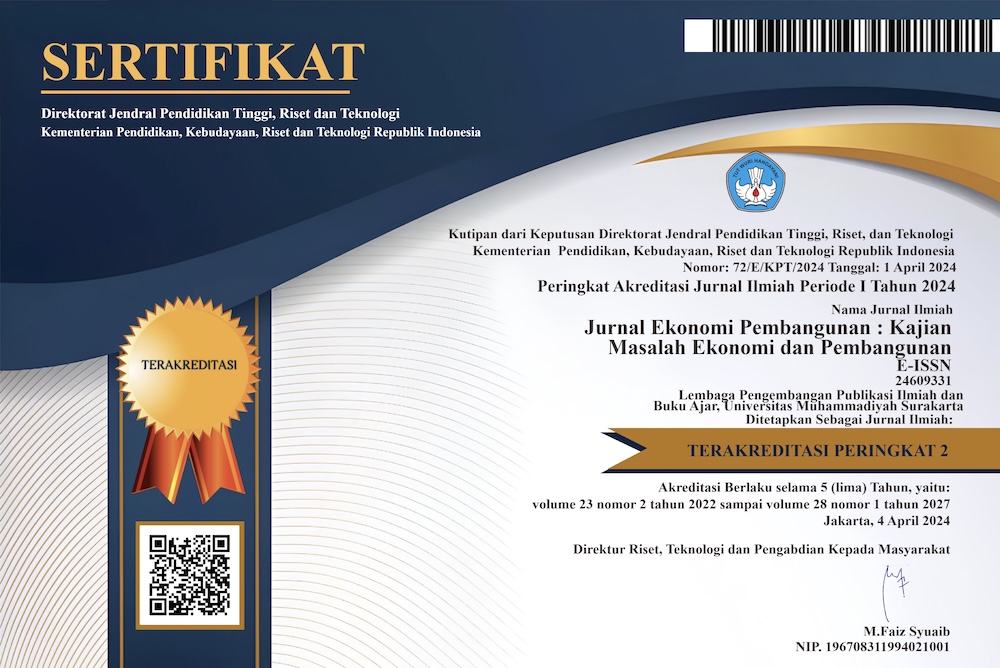The Impact of Macroeconomic Indicators on Indonesia’s Foreign Exchange Reserve Position
DOI:
https://doi.org/10.23917/jep.v23i1.17673Keywords:
Exchange Reserves, Exports, Imports, Exchange Rates, InflationAbstract
A country’s foreign exchange reserves are its foreign currency savings that can be utilized to finance international transactions. The purpose of this study is to determine how macroeconomic indicators (exports, imports, exchange rates, inflation rates, and foreign debt) influence Indonesia’s foreign currency reserves. The researchers used secondary data in the form of monthly time series, as well as quantitative analysis using multiple linear regression. The model that was used was the Vector Error Correction Model (VECM). According to the research, future exports and external debt have a positive impact on Indonesia’s foreign exchange reserves. Indonesia’s foreign exchange reserves are negatively impacted by imports and predicted inflation rates, whereas the rupiah exchange rate has no effect. In the model, there is a short-run to long-run equilibrium relationship. The IRF results show that shocks from other independent variables have little effect on foreign exchange reserves and that the foreign exchange reserves variable contributes the most to the shocks that occur.















